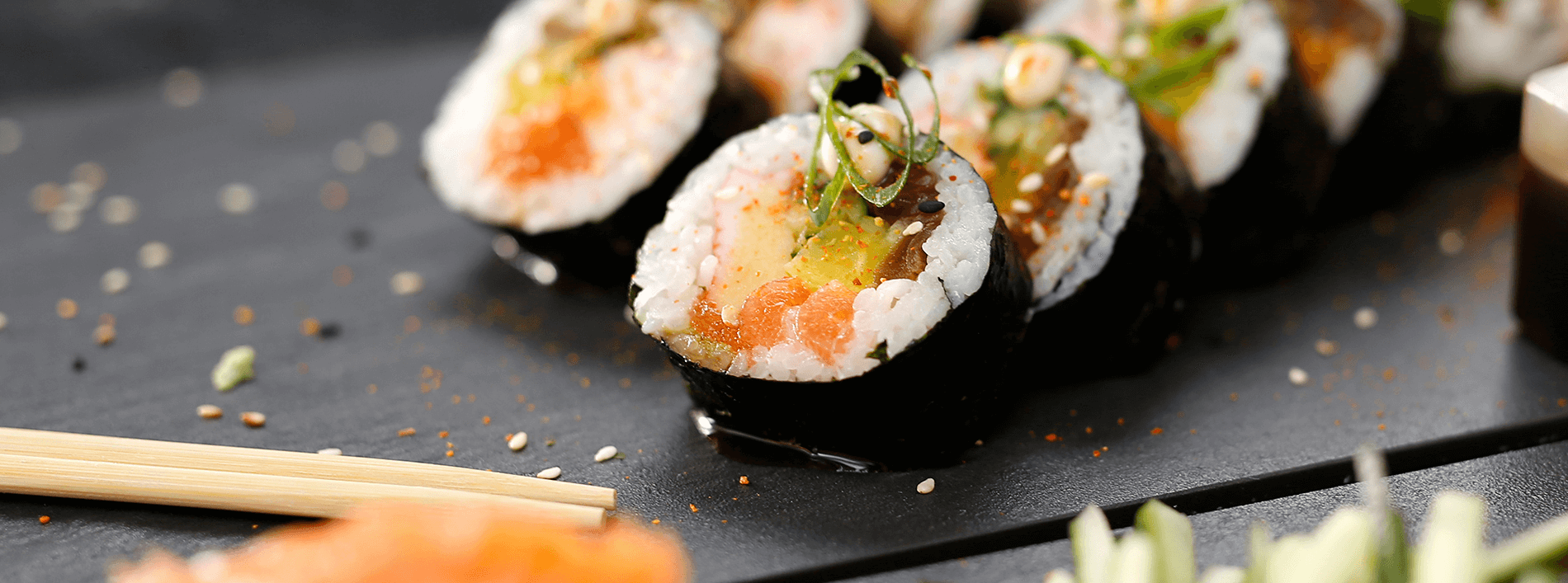In this post we will chart the course of sushi, from humble beginnings many centuries ago, to the sushi delivery restaurants we see today.
In historical terms, sushi has legs. This is a metaphor; if the sushi you receive from your local sushi takeaway is equipped with limbs, send it back right away!
One of the first things to clear up is the most prevalent sushi misnomer. The term ‘sushi’ does not actually mean raw fish. Instead, it refers to the vinegared rice which can be served with various toppings, which may or may or may not include raw fish.
As with many ancient foods, the true origins of sushi are a little clouded, subject to claim and counterclaim from a number of sources.
A fishy tale
Drizzled with charm like a generous splash of soy, an ancient Japanese wives tale tells of an elderly woman who hid her pots of rice in osprey nests so thieves would not find them. When it was safe to do so, she collected her pots, only to find that the rice had started to ferment.
In the nest, alongside her pots of fermenting rice, were scraps of fish left behind by the osprey. The old lady is said to have mixed the fish scraps with the rice to create a tasty concoction. Not only was the mixture delicious; the fermenting rice also served as a method of preserving the fish.
Chinese and Southeast Asian origins
Whilst that’s a delightful story, the true origins of sushi are less clear-cut. The first recorded reference to sushi can be found in a 4th century Chinese dictionary, which describes the process of placing salted fish in cooked rice to kick start the fermentation process.
However, the process to which this description refers i.e. using fermented rice as a fish preservative, actually originated in 2nd century Southeast Asia, where traces of this ancient practice can still be seen today.
The move to Japan
Sushi first appeared in Japan in the 9th century. At this time, the largely Buddhist country embraced the salted fish as an alternative to meat, which Buddhists abstain from eating. At this time the Japanese are credited with being the first to prepare sushi as a complete dish. They ate the fermented rice with the fish, rather than simply using the rice as a preservative and throwing it away like the Chinese and Southeast Asians before them.
The first example of a complete sushi dish originated near Lake Biwa more than 1,000 years ago, comprising of a Golden carp caught from the lake, packed in salted rice. The fermentation process took half a year to complete, before the meal was ready for the upper classes of 9th to 14th century Japan.
Raw fish + an entrepreneurial spirit = modern sushi
In the 1820s, a man called Hanaya Yohei moved to Edo (now known as Tokyo), which at the time was one the world’s largest cities. Hanaya Yohei’s decided to open the first sushi stall in the Ryogoku district of Edo, along the banks of the Sumida River.
Using a more modern and much faster fermentation process, Yohei added rice vinegar and salt to freshly cooked rice, which he pressed by hand, before adding a thin slice of raw fish. Because the fish was caught fresh from the bay it did not need to be preserved, and the modern nigiri sushi we know today was born.
And the rest is history…
Today, thanks to globalisation, advances in refrigeration and the ability to ship fresh fish over long distances, sushi delivery restaurants have flourished all over the world, from London to New York and across Europe, making sushi one of the world’s most popular (and healthiest) fast foods.




